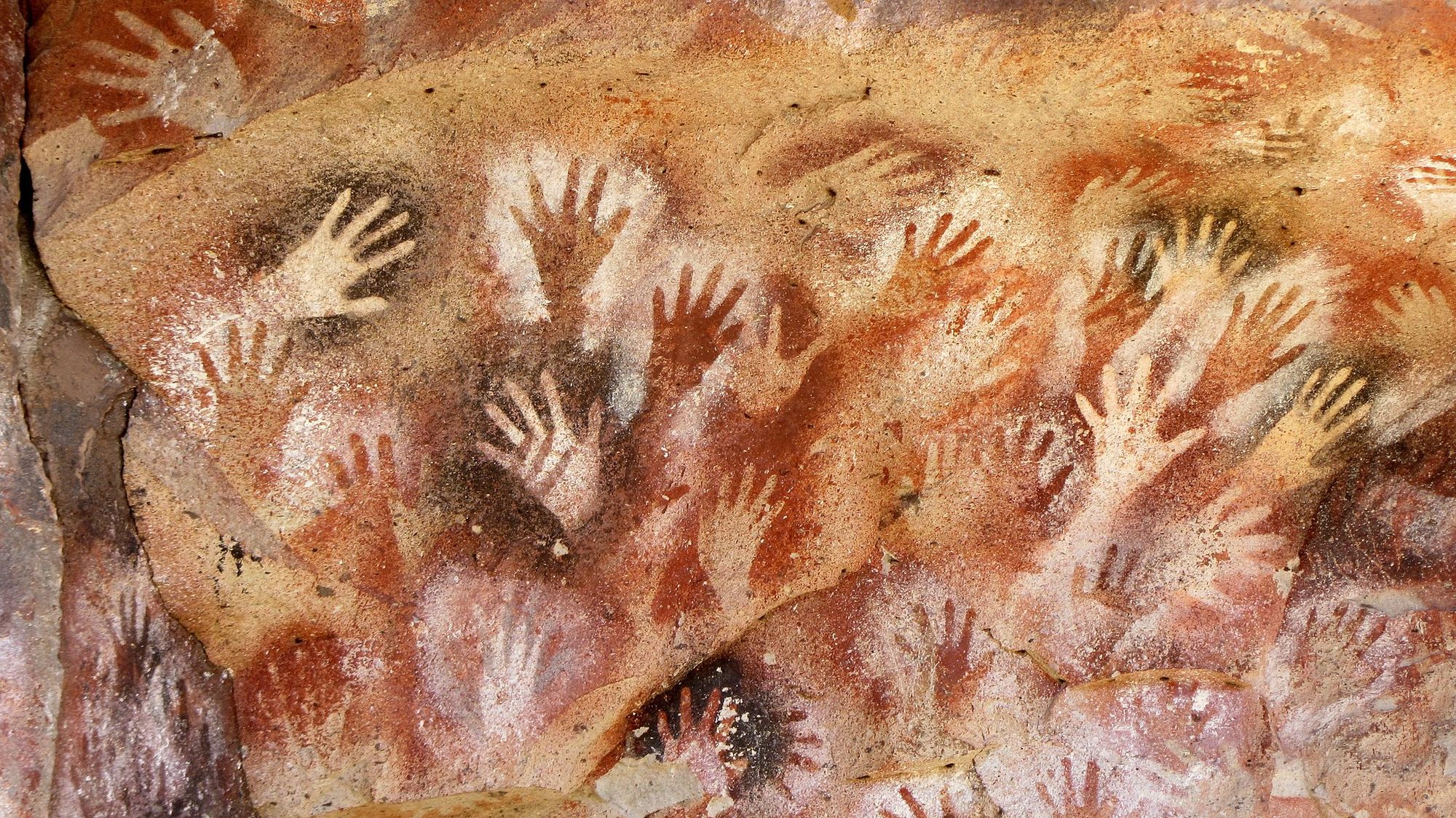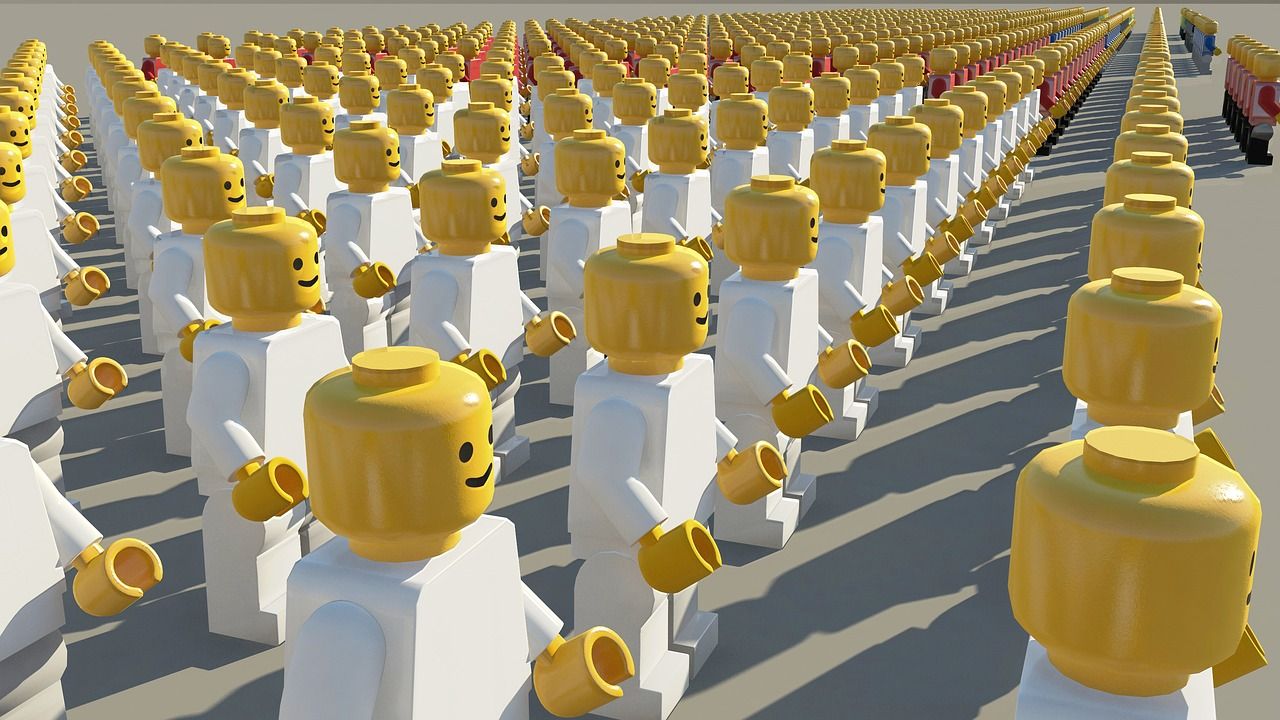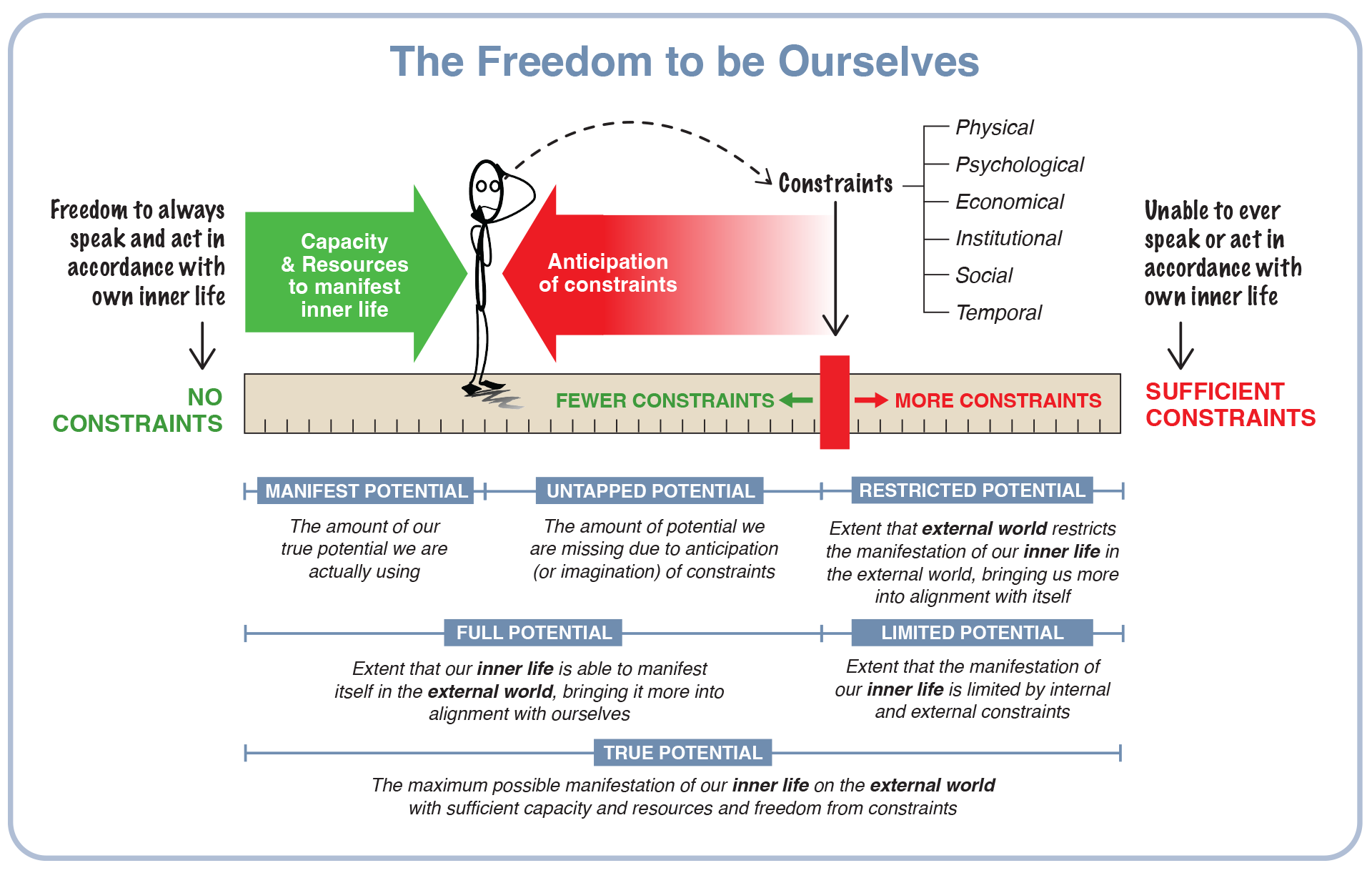Afraid to be ourselves - Part 2: What it means ‘to be ourselves’
What does it means ‘to be ourselves’, why are we sometimes afraid to be, and how does our freedom to be ourselves get restricted?

In Part 1 of Afraid To Be Ourselves we saw how today’s constant connection to the everyone, everywhere, all at once makes us part of The Great Global Social Circle—a hyperconnected social circle so expansive that the chances of offending at least someone—and becoming the Internet’s latest personification of evil—continues to increase exponentially.
As a consequence, not only are we becoming afraid to be ourselves, we are also facing the prospect of forgetting how to be ourselves. Instead, we are becoming increasingly conformist, restricting ourselves to an ever-shrinking list of allowable words and actions in an effort to be seen as a ‘good person’ and avoid being made an example of.
Losing our individual identity?
But surely if we’re all saying the same things and we’re all acting the same way, don’t we eventually become indistinguishable from one another? Don’t we become like the person in uniform, their own uniqueness swallowed into some collective identity and mission, interchangeable with any one of their peers? And don’t such individuals ultimately become redundant or expendable, having nothing to offer that would distinguish them from anyone else?
So in our quest to understand the implications of this hyperconnected conformity—for ourselves and society—we will first need to define what it actually means ‘to be ourselves’. That way we have some kind of benchmark for comparing where we are today… and where we might be heading in the future.

Identifying what it means to ‘to be ourselves’
When we try to work out what it means ‘to be ourselves’, we’re immediately faced with two problems:
- Problem #1:
If we’re too close to a subject (in this case, ourselves), it’s hard to be objective—a conundrum captured in the maxim “can’t see the wood for the trees”. - Problem #2:
If we really are in danger of forgetting how to be ourselves through lack of practice and positive feedback, how would we even recognise what is ‘us’ and what is not?
To answer a complex question such as this, it often helps to consider its opposite first. So let’s think about those occasions or situations when we feel we’re not able ‘to be ourselves’.
When we’re NOT allowed ‘to be ourselves’
Constraints and the external manifestation of our inner life
In all five examples above of not being able ‘to be ourselves’, we notice three things :
1. There’s clearly some sort of inner life going on:
- Our thoughts and beliefs
- Our feelings and values
- Our motivations and goals
These are the parts of ‘us’ that only we get to see, unless…
2. There’s an external manifestation of that inner life:
- What we say
- How we act or behave
- The choices we make
- The emotions we display
- The relationships we form
These manifestations of our inner life have some effect on the external world, changing it in some way. We could say that our action are attempting to remake the external world in accordance with our idealised idea of what it should lool like and how it should work.
3. There are constraints being imposed on the external manifestation of our inner life:
- Insufficient personal capacity or resources
- Disapproval
- Opposition
- Prohibition
Such constraints work to reduce our effect on the external world. We could say that the world remakes us in accordance with its own idealised idea of who and what we should be.

Where constraints come from
Constraints that prevent our inner life from manifesting itself in the external world can be either internal or external.
- Internal constraints – come from our own lack of capacity or resources. We may want to solve world hunger or just purchase our own next meal, but we cannot do so if we lack either the capacity or the resources.
- External constraints – come from physical limitations/boundaries such as cliff edges and gravity, but they can also come from other human beings, who presumably have their own inner life trying to manifest itself in the external world. If their inner life proves incompatible with our inner life, it creates the potential for inhibition, resistance and conflict. Consider how someone who believes that citizens have the right to bear arms will find opposition from those who are just as strongly against it. (We will be looking at the implications of incompatible inner lives in Part 4 of this series.)
We should also remember that other human beings don’t necessarily need to be present or even alive to impose constraints on us. They can establish rules, processes, systems and institutions that impose their constraints on us in absentia. Many traditions and customs, for example, have long-forgotten reasons that may not even be relevant to modern life, yet even today they can act as a constraint on our freedom to speak or act as we choose.
The freedom ‘to be ourselves’
Without having any further context or caveat, then, we can draw the conclusion that ‘to be ourselves’ means that:
- We are able to say what we want, to whomever we want, whenever we want.
- We can act however we want, whenever we want to.
- We can go wherever we choose, whenever we choose.
- We can freely express (and act upon) whatever emotion we happen to be feeling at the time.
In other words:
To be ourselves…
…is the freedom to act in and upon the external world in accordance with our thoughts and beliefs, feelings and values, motivations and goals.
Whether or not it is (always) right or appropriate to have this degree of unconstrained freedom is another matter, and one we’ll return to in a future article. For now, we just want to establish a benchmark for what it means ‘to be ourselves’, one that we can use as a comparison. Whenever we compare a situation with our benchmark, we'll be able to identify how they differ so we can begin asking why.
When we’re afraid to be ourselves
Now that we know what it means ‘to be ourselves’, we can also define what it means when we talk about being “afraid to be ourselves”.
We become afraid to be ourselves…
…whenever we anticipate (or imagine) an external or internal constraint on the manifestation of our inner life.
Summary
In this article we have now established what it means ‘to be ourselves’, when we’re not able to be ourselves, and when we’re afraid to be ourselves. We also introduced the concept of internal (capacity and resources) and external constraints.
We can encapsulate all these ideas in a simple model (shown below), which will prove invaluable as we continue our investigation in future articles:

In our next article, Afraid to Be Ourselves – Part 3: Splitting Self, we focus on the implications of having the freedom ‘to be ourselves’ restricted in some way. We’ll see that any inability to manifest our inner life in the external world results in a mismatch that wants to be resolved.

